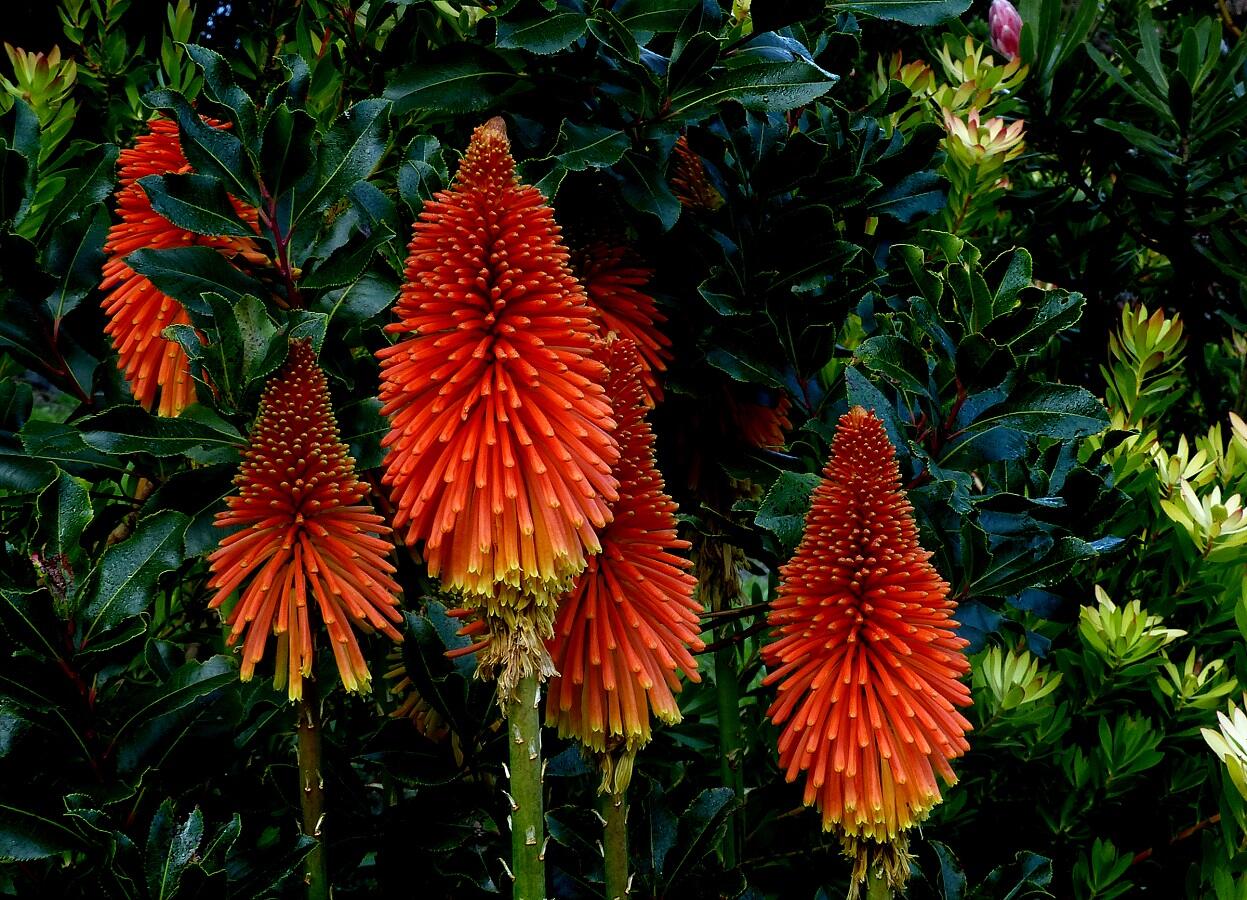
Torch lily, also known as Kniphofia, is a stunning flowering plant that belongs to the Asphodelaceae family. With its vibrant colors and distinctive shape, the torch lily is a true eye-catcher in any garden or landscape. However, there’s more to this beautiful plant than meets the eye.
In this article, we will explore 14 unbelievable facts about torch lily that will leave you amazed and captivated. From its origins and unique features to its uses and benefits, you’ll discover why this plant is a favorite among garden enthusiasts and nature lovers.
So, let’s dive into the fascinating world of torch lilies and uncover some surprising insights about these incredible plants!
Key Takeaways:
- Torch Lily, also known as Kniphofia, is a stunning and low-maintenance perennial plant that adds vibrant colors to gardens. It attracts pollinators and symbolizes strength and endurance.
- With its fiery torch-like appearance, Torch Lily is a drought-tolerant and deer-resistant plant that blooms from late spring to fall. It’s a magnet for hummingbirds and makes stunning cut flowers.
Torch Lily, also known as Kniphofia, is a stunning perennial plant.
With its vibrant and fiery flower spikes, Torch Lily adds a burst of color to any garden or landscape.
Torch Lily belongs to the Asphodelaceae family.
This family of plants is native to Africa and consists of approximately 70 different species.
Torch Lily gets its name from its torch-like appearance.
The flower spikes resemble fiery torches, which is where the plant gets its common name.
Torch Lily comes in a variety of colors.
While the most common color is vibrant orange, Torch Lily can also be found in shades of red, yellow, and even bi-color combinations.
Torch Lily attracts pollinators.
The bright colors and sweet nectar of Torch Lily flowers attract hummingbirds, bees, and butterflies, making it a great addition to pollinator gardens.
Torch Lily is drought-tolerant.
These plants are well-adapted to dry conditions and can thrive in areas with limited water availability.
Torch Lily is easy to grow.
With its low maintenance requirements, Torch Lily is a popular choice among gardeners, whether they are beginners or experienced horticulturists.
Torch Lily blooms during the summer months.
The flowers typically start blooming in late spring or early summer and can continue to dazzle with their vibrant display well into the fall.
Torch Lily can reach impressive heights.
Depending on the species, Torch Lily can grow anywhere from 2 to 5 feet tall, adding vertical interest to garden beds and borders.
Torch Lily is a magnet for hummingbirds.
The long tubular flowers of Torch Lily are perfectly designed to attract and accommodate hummingbirds, who are drawn to the nectar-rich blooms.
Torch Lily makes a stunning cut flower.
The tall flower spikes of Torch Lily make a bold statement in floral arrangements, bringing a touch of exotic beauty indoors.
Torch Lily is a symbol of strength and endurance.
In the language of flowers, Torch Lily represents resilience and perseverance, making it a meaningful gift for someone going through a challenging time.
Torch Lily can be divided to create new plants.
By carefully dividing the clumps of Torch Lily, gardeners can propagate new plants and expand their Torch Lily collection.
Torch Lily is deer-resistant.
Due to its spiky texture and bitter taste, Torch Lily is less appealing to deer and other grazing animals, making it a great choice for gardens in deer-prone areas.
These are just a few of the many incredible facts about Torch Lily. This stunning plant is a true showstopper, both in the garden and in floral arrangements. With its vibrant colors, drought tolerance, and ability to attract pollinators, Torch Lily is a must-have for any plant enthusiast.
Whether you’re a seasoned gardener or just starting out, Torch Lily is a low-maintenance plant that will bring beauty and joy to your outdoor space. So, why not add this incredible plant to your garden and experience the magic of Torch Lily for yourself?
Conclusion
In conclusion, it’s clear that torch lilies are an incredible and fascinating plant species. Their vibrant colors, unique shape, and ability to attract pollinators make them a popular choice among gardeners and plant enthusiasts. From their resistance to drought and heat to their medicinal properties, torch lilies have proven to be not only visually stunning but also beneficial to both humans and the environment.
Whether you’re looking to enhance the aesthetics of your garden or add a touch of natural beauty to your indoor space, torch lilies are definitely worth considering. With their striking appearance and numerous positive attributes, these plants are sure to make a statement and provide enjoyment for years to come.
FAQs
1. Are torch lilies easy to grow?
Yes, torch lilies are relatively easy to grow. They thrive in well-drained soil and prefer full sun. Once established, they require minimal maintenance and can tolerate dry conditions.
2. Can I grow torch lilies indoors?
Yes, you can grow torch lilies indoors. However, they require bright light and relatively warm temperatures. Make sure to place them in a sunny spot near a window and water them regularly.
3. Do torch lilies attract pollinators?
Absolutely! Torch lilies are known for attracting hummingbirds, butterflies, and bees. Their vibrant colors and nectar-rich flowers make them irresistible to these pollinators.
4. Can torch lilies be used for medicinal purposes?
Yes, torch lilies have been used in traditional medicine for various purposes. Some of their reported benefits include treating skin conditions, reducing inflammation, and promoting digestion. However, it’s important to consult a healthcare professional before using them for medicinal purposes.
5. How often should torch lilies be watered?
Torch lilies should be watered regularly but sparingly. Overwatering can lead to root rot, so it’s important to allow the soil to dry out slightly between waterings. Aim to water them once or twice a week, depending on the weather and soil conditions.
Was this page helpful?
Our commitment to delivering trustworthy and engaging content is at the heart of what we do. Each fact on our site is contributed by real users like you, bringing a wealth of diverse insights and information. To ensure the highest standards of accuracy and reliability, our dedicated editors meticulously review each submission. This process guarantees that the facts we share are not only fascinating but also credible. Trust in our commitment to quality and authenticity as you explore and learn with us.


